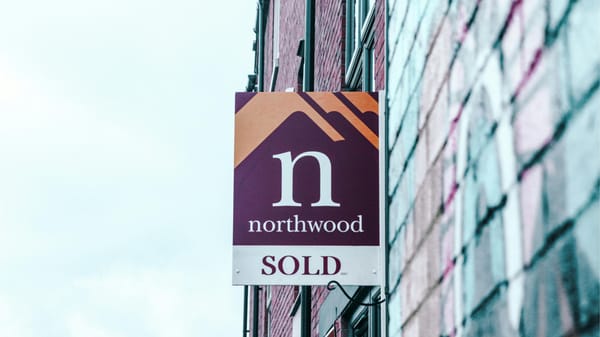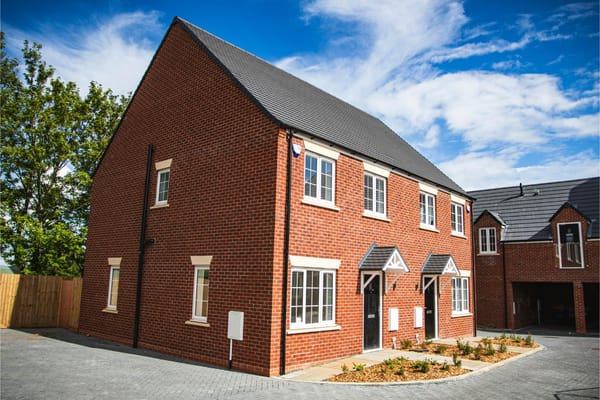Why First-Time Buyers Are Flocking Back to Britain’s Regional Cities

A striking shift is emerging in the UK housing market: first-time buyers are moving away from the countryside and back into Britain’s regional cities. After years of pandemic-fuelled demand for rural and coastal homes, new figures show that younger buyers are once again drawn to the affordability, jobs and lifestyle on offer in urban centres like Liverpool, Dundee, Edinburgh and Doncaster.
While the story of city revival is not new, the pace of this reversal has surprised many. In the past year alone, demand from first-time buyers in some regional cities has surged by more than 16 percent. For landlords, developers and local authorities, this trend brings both opportunities and new challenges.
From Rural Rush to Urban Renewal
During the pandemic years, remote working and lifestyle changes triggered a rush for space. Many first-time buyers chose to move to rural villages, market towns and coastal hotspots. The promise of bigger gardens, home offices and a better quality of life saw prices in these areas surge, often outpacing cities.
But as hybrid work settles and the cost-of-living squeeze bites, buyers are recalculating what they really want — and can afford. For many, that means turning their backs on longer commutes and higher transport costs in favour of the connectivity, culture and convenience of Britain’s regional cities.
The Numbers: Cities Regain Their Edge
Recent market data underlines this rebound. In cities like Dundee, Edinburgh and Liverpool, first-time buyer registrations are up 16 percent year-on-year, even as overall housing transactions soften slightly. Areas like Doncaster and Nottingham are also seeing a marked uptick.
In contrast, some rural areas that saw house price booms between 2020 and 2022 are now reporting weaker buyer activity. According to recent figures, demand in parts of the Lake District, rural Devon and the Cotswolds has slowed noticeably, with some local agents seeing fewer viewings and more price reductions.
Why the Shift?
Several factors explain the renewed pull of the city for young buyers:
- Affordability: Rural house prices rose sharply during the pandemic. Many buyers are finding that city flats or terraced houses are now better value on a cost-per-square-foot basis. In some parts of the North West, first-time buyers can save up to £30,000 by choosing city centre homes over village properties.
- Hybrid work patterns: While remote working is here to stay for many, hybrid models mean a regular commute is still required. Cities with good transport links and easy access to major employers are back in favour.
- Lifestyle appeal: After years of lockdowns and limited social contact, younger buyers want entertainment, bars, restaurants and cultural amenities on their doorstep. Many say this outweighs the appeal of extra garden space or countryside isolation.
- Rental to ownership transitions: Strong rental demand in regional cities has pushed up rents. For some renters, the monthly cost of owning now compares favourably with paying high city rents, especially with new mortgage affordability tweaks by major lenders like Santander.
Regional Winners: Where First-Time Buyers Are Headed
While London continues to attract buyers with larger budgets, the real momentum is in cities with a strong balance of affordability and amenities.
- Liverpool: Popular with students and young professionals, the city combines good housing stock, regeneration zones and a lively cultural scene. Areas like Baltic Triangle and the docks have seen first-time buyer interest jump.
- Dundee: Scotland’s smaller cities are seeing a revival as university hubs and creative industries attract younger workers. Dundee, with its waterfront developments and affordable flats, is high on the radar.
- Edinburgh: Scotland’s capital remains in strong demand despite high prices. First-time buyers are flocking to less central areas such as Leith and parts of West Edinburgh for better value.
- Doncaster and Nottingham: Smaller cities in Yorkshire and the East Midlands offer solid transport links, growing jobs markets and family-friendly neighbourhoods.
Challenges: Supply and Infrastructure
This trend back to cities is not without its pressures. Many urban areas still face a shortage of suitable starter homes. Local authorities are racing to balance brownfield regeneration, affordable housing quotas and infrastructure upgrades.
In cities where new apartment schemes stalled during the pandemic, the squeeze is particularly acute. Some developers are revisiting mothballed sites as demand rebounds, but construction costs and planning constraints continue to slow delivery.
Transport remains another key factor. Cities that can offer affordable, reliable connections to major employment centres will maintain their appeal. Where local services struggle — for example, crowded trains or underfunded bus routes — buyers may be put off.
The Buy-to-Let Perspective
Landlords should watch this trend closely. Rising first-time buyer demand can signal stronger exit prices for small flats and starter houses. It also creates new competition for rental stock, as more renters choose to buy.
For portfolio landlords, this shift may reinforce the case for focusing on urban regeneration zones with strong long-term tenant demand and robust resale values. Areas near universities, hospitals and large employers will continue to attract young professionals, especially as hybrid work remains the norm.
Will Rural Markets Suffer?
Not necessarily. Experts say the rural housing market is unlikely to crash, but a period of stabilisation is likely. Many rural homeowners now face a longer selling timeline and more price sensitivity.
In some cases, rural areas may see a return to more traditional local demand, with fewer out-of-area buyers inflating prices. This could be positive for communities that have felt priced out by city leavers.
For investors, the message is that location dynamics are evolving again. What worked during the pandemic may not align with buyer preferences today.
What It Means for Developers
This urban revival should prompt developers to think carefully about unit mix and location strategy. Demand for compact, well-located homes near transport and services is back. Larger three-bed city apartments, previously seen as risky, could see renewed popularity as hybrid workers seek a balance between home office space and city life.
In regeneration areas, creating walkable communities with green space, leisure and retail elements will be key to attracting buyers who still want some elements of the suburban lifestyle.
Policy Questions: Can Cities Keep Up?
Local authorities face a balancing act. They must deliver enough new homes while ensuring infrastructure, schools and public services keep pace.
Labour’s focus on brownfield development and urban densification may support this trend if local planning teams are properly resourced. However, recent delays in major city schemes highlight the barriers that still slow progress, from viability issues to community objections.
To truly meet the needs of first-time buyers, local authorities must get smarter about land release, transport upgrades and affordable housing quotas.
Final Thoughts: The Resilient City
Britain’s cities have long proven their ability to reinvent themselves in response to changing economic and social forces. While the pandemic briefly reshaped preferences towards space and isolation, the enduring strengths of urban living are reasserting themselves.
For young buyers weighing up where to build their future, the draw of walkable neighbourhoods, cultural vibrancy and connectivity is hard to resist — especially as stretched budgets meet the reality of high rural prices.
For property professionals, the message is clear: understanding the new urban buyer, investing in the right city locations and staying alert to evolving infrastructure plans will be key to staying ahead.





